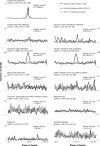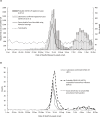Excess deaths directly and indirectly attributable to COVID-19 using routinely reported mortality data, Bishkek, Kyrgyzstan, 2020: a cross-sectional study
- PMID: 37433726
- PMCID: PMC10347454
- DOI: 10.1136/bmjopen-2022-069521
Excess deaths directly and indirectly attributable to COVID-19 using routinely reported mortality data, Bishkek, Kyrgyzstan, 2020: a cross-sectional study
Abstract
Objectives: Studies on excess deaths (ED) show that reported deaths from COVID-19 underestimate death. To understand mortality for improved pandemic preparedness, we estimated ED directly and indirectly attributable to COVID-19 and ED by age groups.
Design: Cross-sectional study using routinely reported individual deaths data.
Settings: The 21 health facilities in Bishkek that register all city deaths.
Participants: Residents of Bishkek who died in the city from 2015 to 2020.
Outcome measure: We report weekly and cumulative ED by age, sex and causes of death for 2020. EDs are the difference between observed and expected deaths. Expected deaths were calculated using the historical average and the upper bound of the 95% CI from 2015 to 2019. We calculated the percentage of deaths above expected using the upper bound of the 95% CI of expected deaths. COVID-19 deaths were laboratory confirmed (U07.1) or probable (U07.2 or unspecified pneumonia).
Results: Of 4660 deaths in 2020, we estimated 840-1042 ED (79-98 ED per 100 000 people). Deaths were 22% greater than expected. EDs were greater for men (28%) than for women (20%). EDs were observed in all age groups, with the highest ED (43%) among people 65-74 years of age. Hospital deaths were 45% higher than expected. During peak mortality (1 July -21 July), weekly ED was 267% above expected, and ED by disease-specific cause of death were above expected: 193% for ischaemic heart diseases, 52% for cerebrovascular diseases and 421% for lower respiratory diseases. COVID-19 was directly attributable to 69% of ED.
Conclusion: Deaths directly and indirectly associated with the COVID-19 pandemic were markedly higher than reported, especially for older populations, in hospital settings, and during peak weeks of SARS-CoV-2 transmission. These ED estimates can support efforts to prioritise support for persons at greatest risk of dying during surges.
Keywords: COVID-19; Epidemiology; PUBLIC HEALTH.
© Author(s) (or their employer(s)) 2023. Re-use permitted under CC BY-NC. No commercial re-use. See rights and permissions. Published by BMJ.
Conflict of interest statement
Competing interests: None declared.
Figures



Similar articles
-
Excess Mortality Associated With the COVID-19 Pandemic-Los Angeles County, March-September 2020.J Public Health Manag Pract. 2021 May-Jun 01;27(3):233-239. doi: 10.1097/PHH.0000000000001344. J Public Health Manag Pract. 2021. PMID: 33762539
-
Preliminary Estimate of Excess Mortality During the COVID-19 Outbreak - New York City, March 11-May 2, 2020.MMWR Morb Mortal Wkly Rep. 2020 May 15;69(19):603-605. doi: 10.15585/mmwr.mm6919e5. MMWR Morb Mortal Wkly Rep. 2020. PMID: 32407306
-
Excess deaths reveal unequal impact of COVID-19 in Ecuador.BMJ Glob Health. 2021 Sep;6(9):e006446. doi: 10.1136/bmjgh-2021-006446. BMJ Glob Health. 2021. PMID: 34583975 Free PMC article. Review.
-
Excess all-cause deaths stratified by sex and age in Peru: a time series analysis during the COVID-19 pandemic.BMJ Open. 2022 Mar 10;12(3):e057056. doi: 10.1136/bmjopen-2021-057056. BMJ Open. 2022. PMID: 35273060 Free PMC article.
-
[SENTIERI - Epidemiological Study of Residents in National Priority Contaminated Sites. Sixth Report].Epidemiol Prev. 2023 Jan-Apr;47(1-2 Suppl 1):1-286. doi: 10.19191/EP23.1-2-S1.003. Epidemiol Prev. 2023. PMID: 36825373 Italian.
Cited by
-
Excess mortality during the first 2 years of the COVID-19 pandemic (2020-2021) in the Netherlands: Overall and across demographic subgroups.IJID Reg. 2024 Nov 27;14:100500. doi: 10.1016/j.ijregi.2024.100500. eCollection 2025 Mar. IJID Reg. 2024. PMID: 39830316 Free PMC article.
References
-
- The Centre for Evidence-Based Medicine . Evidence service to support the COVID-19 response, global COVID-19 case fatality rates. 2020. Available: https://www.cebm.net/covid-19/global-covid-19-case-fatality-rates/
-
- Estimation of excess mortality due to COVID-19 . 2021 Ihme. n.d. Available: http://www.healthdata.org/special-analysis/estimation-excess-mortality-d...
Publication types
MeSH terms
LinkOut - more resources
Full Text Sources
Medical
Miscellaneous
